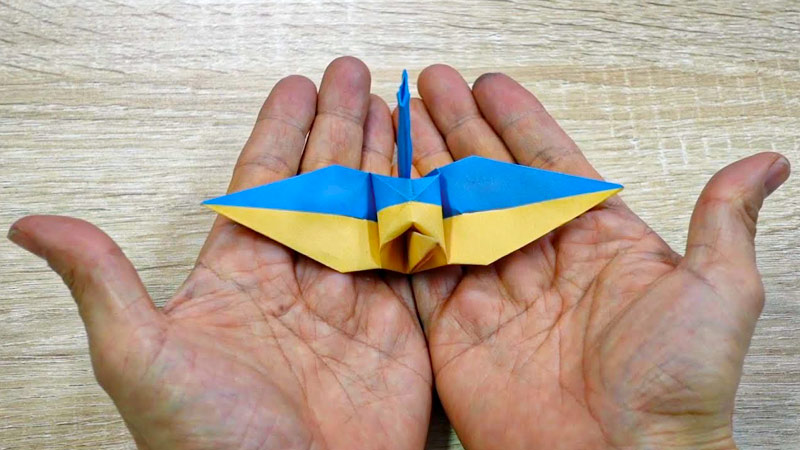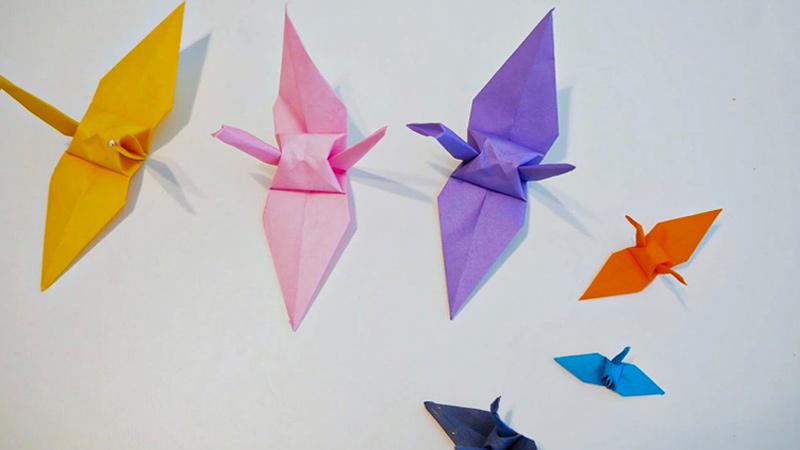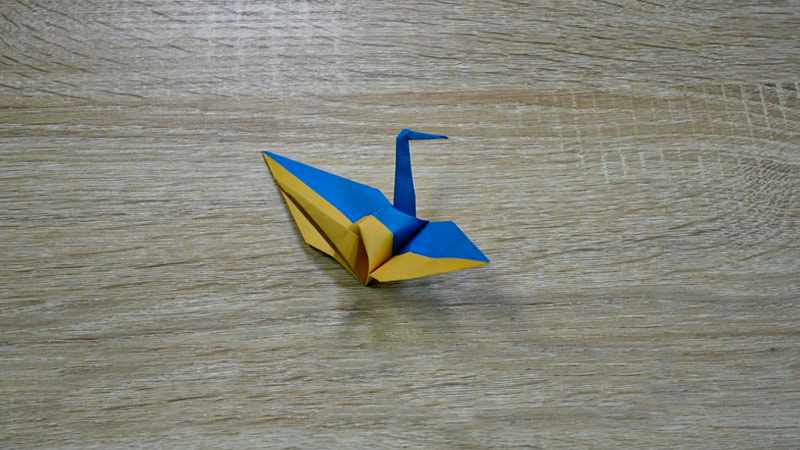An Origami Peace Crane, also known as an orizuru, is a delicate paper creation with profound symbolism. Rooted in Japanese tradition, it represents more than a mere artistic endeavor.
The art of folding paper cranes, or senbazuru, holds cultural significance, embodying themes of peace, hope, and unity.
Beyond its aesthetic charm, the Origami Peace Crane gained global recognition, especially after Sadako Sasaki’s poignant story following the Hiroshima bombing.
Crafting this intricate paper sculpture is a meditative journey, symbolizing a wish for healing and a collective aspiration for a world free from conflict.
Each fold tells a story, making the Origami Peace Crane a universal emblem of resilience and peace.

What Is an Origami Peace Crane?
An Origami Peace Crane, or orizuru in Japanese, is a folded paper crane symbolizing peace, hope, and unity. Rooted in the ancient art of origami, it gained profound significance after World War II.
The tradition of folding 1,000 cranes, known as senbazuru, embodies good luck and fulfillment of a wish. Inspired by this, Sadako Sasaki, a survivor of the Hiroshima atomic bombing, folded cranes for healing and global peace.
Her story resonated globally, turning the Origami Peace Crane into a universal emblem. It inspires collective folding events today, representing a shared aspiration for a harmonious and peaceful world.
History of the Origami Peace Crane
The history of the Origami Peace Crane is deeply intertwined with the ancient Japanese art of paper folding and origami.
Here is a chronological overview of its evolution:
Ancient Origins of Origami
Origami traces its roots to ancient Japan, where paper was introduced from China in the 6th century. Initially used for ceremonial purposes, origami gradually evolved into an art form.
By the Edo period (1603-1868), origami had become a popular pastime, with cranes emerging as a symbol of grace and longevity.
Senbazuru Tradition

The practice of folding 1,000 paper cranes, known as senbazuru, gained prominence in Japan. This tradition became associated with good luck, happiness, and granting a wish. The crane, believed to live for a thousand years, represented longevity and good fortune.
Sadako Sasaki’s Story
The connection between the Origami Peace Crane and peace deepened significantly after World War II. Sadako Sasaki, a young survivor of the Hiroshima atomic bombing in 1945, developed leukemia due to radiation exposure.
Inspired by the senbazuru tradition, Sadako embarked on folding 1,000 cranes with the wish for healing and global peace. Although Sadako passed away, her story symbolised hope and resilience.
Global Recognition and Spread
Post-World War II, the Origami Peace Crane gained international recognition as a powerful symbol of peace. Sadako’s story resonated globally, inspiring people worldwide to fold cranes as a gesture of solidarity and a symbol of peace.
This marked the crane’s transformation from a cultural artifact to a universal symbol.
Inclusion in Monuments and Memorials
Origami Peace Cranes found a meaningful place in monuments and memorials dedicated to victims of war. The delicate paper cranes began to be left at these sites as symbols of remembrance, hope, and the collective desire for a more peaceful world.
Evolution into Peace Activism
The Origami Peace Crane evolved beyond its symbolic roots and became a tool for peace activism. Individuals and communities engaged in collective folding events, using the crane as a tangible expression of their commitment to peace, unity, and understanding.
Contemporary Significance
In the present day, the Origami Peace Crane continues to hold timeless significance. It symbolises creativity, cultural exchange, and a universal aspiration for a world united in the pursuit of lasting peace.
The crane’s journey from ancient Japanese tradition to a global emblem illustrates its enduring impact on hearts and minds worldwide.
What Is the Symbolic Meaning of an Origami Peace Crane?

The Origami Peace Crane, an orizuru in Japanese, carries profound symbolic meaning, embodying themes of peace, hope, and unity.
Here’s a closer look at its symbolic significance:
Peace and Tranquility
At its core, the Origami Peace Crane is a powerful symbol of peace. The delicate and serene nature of the crane’s form reflects a collective aspiration for a world free from conflict and violence.
Wish for Positive Change
The tradition of folding 1,000 cranes, known as senbazuru, is associated with granting a wish. Each fold represents a wish for positive change, personally and for the broader global community.
Hope and Resilience
The act of folding cranes, especially in challenging times, symbolizes hope and resilience. It reflects the belief that positive transformations can occur through collective efforts and determination.
Healing and Well-being
The crane, associated with longevity in Japanese culture, symbolizes healing. Folding Origami Peace Cranes can be a therapeutic practice, expressing a wish for physical and emotional well-being.
Global Unity
The symbolic meaning of the Origami Peace Crane transcends cultural and geographical boundaries. People from diverse backgrounds engage in folding cranes, fostering a sense of unity and interconnectedness on a global scale.
Remembrance and Tribute
Origami Peace Cranes are often incorporated into monuments and memorials dedicated to victims of war. They serve as symbols of remembrance, honouring the lives lost and expressing a collective desire for a more peaceful future.
Collective Peace Activism
Folding Origami Peace Cranes has become a form of peace activism. Participating in collective folding events or displaying the cranes in public spaces symbolizes a shared commitment to peace, understanding, and social change.
Cultural Heritage
Rooted in Japanese tradition, the crane holds cultural significance. Engaging in the art of origami reflects an appreciation for Japanese culture and its contribution to a global language of symbolism.
Environmental Consciousness
Crafted from paper, Origami Peace Cranes also symbolize environmental respect. The use of simple materials aligns with sustainability principles, highlighting the connection between peace and the planet’s well-being.
Positive Energy and Creativity
Folding Origami Peace Cranes provides a creative outlet, fostering positive energy and a sense of accomplishment. It represents a mindful and artistic pursuit that contributes to personal well-being.
How Can You Create an Origami Peace Crane? A Step-By-Step Guide

Creating an Origami Peace Crane is a rewarding and symbolic process that requires precision and patience.
Here is a step-by-step guide on how you can craft your own Origami Peace Crane:
Materials
Square origami paper or any square paper cut to size.
Step-by-Step Instructions:
Start with the Color Side Down
Begin with the coloured side of the paper facing down. If you’re using dual-coloured paper, ensure the colour you desire for the crane’s body is facing down.
Fold Diagonally
Fold the paper diagonally in half, creating a triangle. Press firmly on the fold, then unfold.
Fold Diagonally in the Opposite Direction
Fold the paper diagonally in the opposite direction, forming another triangle. Press down on the fold and unfold.
Flip the Paper Over
Turn the paper over so that the colour you want for the crane’s body faces down.
Fold in Half Horizontally
Fold the paper in half horizontally, creating a rectangle. Crease well and unfold.
Fold in Half Vertically
Fold the paper in half vertically, forming another rectangle. Crease well and unfold.
Collapse the Paper
Bring the four corners of the paper together at the centre by collapsing along the creases. This results in a smaller square with four flaps on each side.
Fold the Top Flaps
Fold one of the top flaps to meet the centre line. Repeat with the opposite flap on the same side. Flip the paper over and repeat with the other two flaps on this side.
Fold the Bottom Edges
Take one of the bottom edges of the top layer and fold it up to meet the top edge. Crease well and unfold.
Open the Flap and Squash Fold
Open the flap you just folded and squash it flat along the crease, creating a diamond shape with two legs at the bottom.
Repeat Steps for Other Flaps
Repeat steps 9 and 10 with the other three flaps on each side, resulting in four diamond shapes with two legs each.
Fold the Legs Inward
Fold one leg of the top layer inward to meet the centre line. Repeat with the other leg on the same side. Flip the paper and repeat with the other two legs.
From the Head and Tail
Take one of the top points of the top layer and fold it down to meet the bottom edge, forming the head. Fold the tip back up to create the beak. Fold one bottom point upward to form the tail.
Pull Out the Wings
Gently pull apart the layers of paper on each side to reveal and shape the crane’s wings.
Shape and Adjust
Customize your Origami Peace Crane by curling the tail, bending the wings, or adjusting the body.
Congratulations!
Display your crafted Origami Peace Crane as a symbol of peace, hope, and unity. The meticulous folds embody a timeless tradition with profound significance.
FAQs
Can anyone fold an Origami Peace Crane, regardless of skill level?
Yes, the folding process is accessible to individuals of all skill levels. Clear instructions and tutorials are available, making it an inclusive and therapeutic activity.
Can Origami Peace Cranes be used for special occasions or celebrations?
Yes, Origami Peace Cranes can serve as unique decorations or gifts for special occasions like weddings, anniversaries, or cultural events, symbolizing wishes for harmony and joy.
How long does it typically take to fold one Origami Peace Crane?
The time required varies depending on skill level and complexity. Beginners may take around 10-15 minutes, while more intricate designs or larger sizes could take longer.
Can Origami Peace Cranes be combined with other art forms or crafts?
Absolutely, Origami Peace Cranes can be incorporated into various art forms, such as paintings, sculptures, or mixed-media artworks, offering diverse and creative possibilities.
To Recap
The Origami Peace Crane transcends its paper form, embodying a timeless message of peace, hope, and unity. Originating in Japanese tradition, its cultural significance has rippled across borders, symbolizing collective aspirations for a harmonious world.
Beyond its artistic appeal, folding encapsulates a profound journey, mirroring the resilience and hope embedded in the human spirit.
From its traditional roots to Sadako Sasaki’s poignant story, the Origami Peace Crane has become a global emblem of healing and peace activism.
As each delicate fold tells a story, the crane is a powerful testament to the enduring human desire for a more compassionate and interconnected world.
Leave a Reply